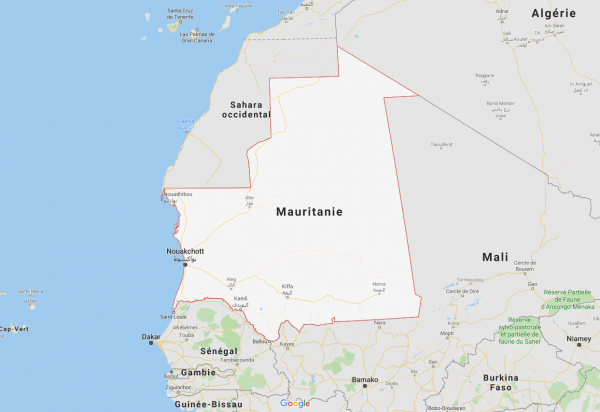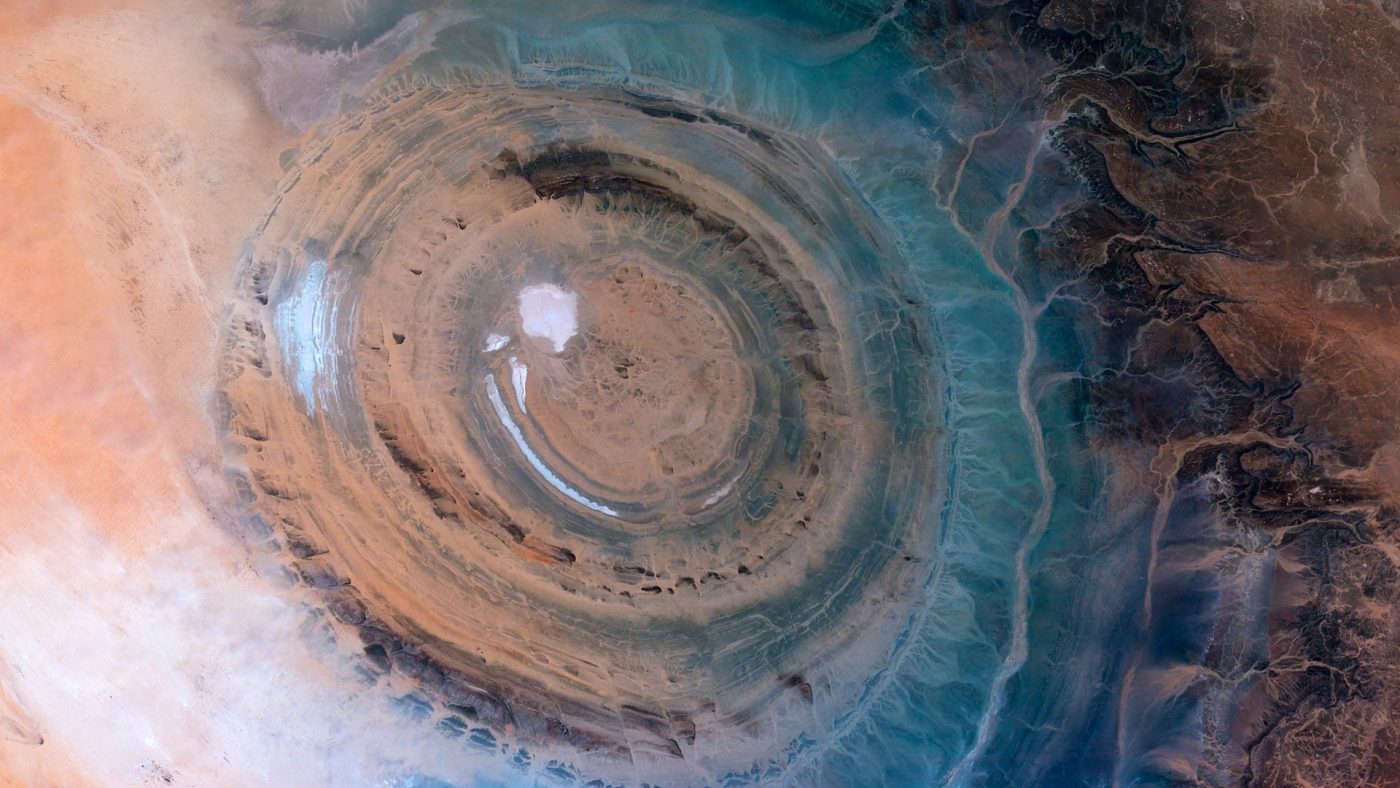Guelb Er Richat – the eye of the desert (The African Eye)
Considered for a long time as a meteorite impact due to its circular shape and the various landforms with a 30 to 40 yards difference between all the layers that make it up, this structure is actually, since 2000, associated to a volcanic phenomenon called Cretaceous and 100 millions years old. Even if no lava was ever observed on the surface, this phenomenon shall result from the creation of a magmatic dome on a cropping of tectonic flaws which stopped growing before becoming a volcano. Then it would have gradually collapsed after a karst erosion.

This form of more than 30 miles in diameter was initially very approximately described in 1916 but became more and more notorious after the first space missions thanks to its singular “eye” shape in the middle of a mostly desert landscape.
Nowadays, the diversity of rocks you can find there make the Guelb Er Richat a formidable playground for all the geologists. But it is also an immense refuge for the fauna and flora during the raining season. We can observe a lot reptiles (lizards and snakes), breeding birds (falcons, Great horned Owls,…) but also numerous mammals (bats, jackals, fennecs,…)

Finally, you can also find a few constructions that reveal humans occupied the site in the Palaeolithic age.


